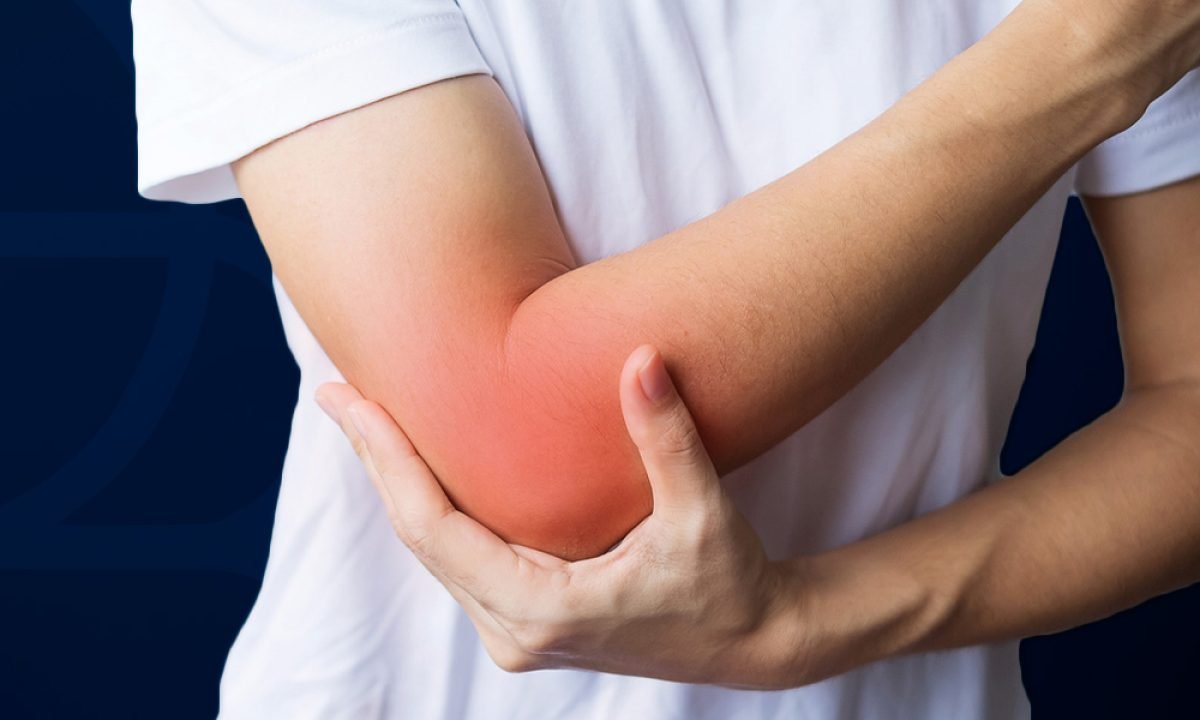How To Avoid Tennis Elbow In Pickleball?
“Tennis elbow may challenge your game, but never let it defeat your spirit. In every setback, there’s a chance for an epic comeback.”
Last updated

Tennis elbow, or lateral epicondylitis, is a familiar foe for many pickleball players, stemming from repetitive arm and wrist movements. Known for its quick, dynamic strokes, pickleball can, unfortunately, increase the risk of this type of tendinitis.
Understanding and addressing the causes are crucial for players who want to maintain peak performance and enjoy the game without pain.
In this how to avoid tennis elbow in pickleball article, you will learn about practical strategies, including technique refinement and targeted exercises, aimed at helping players avoid this all-too-common injury.
Causes of Pickleball Elbow

The nature of pickleball, involving repetitive and sudden movements, significantly strains the elbow joint and surrounding tissues. This strain can lead to inflammation and pain, typical symptoms of lateral epicondylitis.
By recognizing the impact of these specific actions and habits on the elbow, players can make informed changes to their playing style and routine, significantly reducing the risk of developing this condition.
Among these changes, selecting the right equipment is crucial. Learn more about the best pickleball paddles for tennis elbow to ensure you use gear that minimizes strain. Addressing these root causes helps prevent and ensures a more enjoyable and pain-free pickleball experience.”
For avid pickleball players, it’s important to familiarize themselves with the most common picekleball injury. This awareness allows players to quickly identify and take steps to prevent such injuries, ensuring a safer and more effective approach to the game.
Pickleball Elbow Exercises
Incorporating specific exercises into your routine can effectively prevent or manage pickleball elbow. These exercises are designed to strengthen the forearm, enhance wrist flexibility, and condition the shoulder and upper back, providing a comprehensive approach to mitigating injury risks.
Forearm Strengthening
An essential exercise for forearm strengthening involves wrist curls. Using a light dumbbell, sit with your forearm resting on your thigh, palm up.
Slowly curl the weight towards your forearm, focusing on controlled movements. This exercise enhances the muscles’ endurance and strength, reducing the likelihood of tennis elbow.
Wrist Flexor Stretch
For the wrist flexor stretch, extend your arm forward, palm up. Gently pull back on your fingers with your opposite hand until you feel a stretch in your forearm.
Holding this position for 20-30 seconds helps loosen the tight muscles, a crucial step in preventing tennis elbow.
Shoulder and Upper Back Strengthening
Strengthening the shoulder and upper back is vital for overall arm health. Exercises like shoulder shrugs and rows improve upper body strength and stability, essential for practical swing mechanics in pickleball and for reducing undue stress on the elbow.
Pickleball Technique to Avoid Tennis Elbow
Mastering the proper technique in pickleball is crucial in preventing tennis elbow, a condition often caused by incorrect arm movements and overstraining.
My approach focuses on using the whole body to power shots, engaging the core, legs, and shoulders to distribute the effort instead of overloading the arm and elbow. I’ve found that maintaining a fluid swing is essential.
It means ensuring my smooth and continuous motions avoiding any sudden movements that might strain my elbow.
Also, I pay close attention to my grip; a grip that is too tight can increase forearm and elbow tension. I keep my grip firm yet relaxed for flexibility, minimizing stress on the elbow.
Key Strategies to Prevent Pickleball Elbow
Proper Technique and Swing Mechanics
Leveraging advice from experts like Selkirk and Allpickleball, refining your technique is crucial. Focus on mastering a fluid swing and proper grip. Employing biomechanically sound movements reduces the strain on your elbow.
Equipment Considerations
Selecting the right equipment can be a game-changer. Choose paddles with appropriate weight and grip size to minimize stress on your arm. Lightweight paddles with ergonomic grips can reduce the risk of tennis elbow.
Physical Fitness and Conditioning
Maintaining overall physical fitness is critical in preventing injuries. Regular conditioning exercises enhance muscle strength and flexibility, offering better support and reducing the load on your elbow.
Lifestyle and Play Habits
Balancing play habits is essential. Avoid overplaying, and ensure you have adequate rest between games. Managing these aspects of your lifestyle can significantly reduce the risk of tennis elbow.
Should You Play Pickleball with Tennis Elbow?
Participating in pickleball while experiencing tennis elbow symptoms can worsen the condition, potentially leading to more severe injury and prolonged recovery time.
Tennis elbow is characterized by pain and tenderness on the outside of the elbow, often exacerbated by gripping or lifting movements. Playing pickleball in this state can strain the inflamed tendons, delaying healing and increasing discomfort.
If you’re experiencing symptoms of tennis elbow, it’s crucial to rest and allow the affected area to heal. Continuing to play can lead to chronic pain and might require more intensive treatment methods.
During this time, focus on gentle stretching and strengthening exercises that don’t exacerbate your symptoms. These exercises can aid in recovery and prevent future occurrences of tennis elbow.
Before resuming pickleball, consult with a healthcare professional. They can assess your condition and provide personalized advice on when and how to safely return to the game.
When you do start playing again, begin slowly. Warm up thoroughly before playing, and consider using a brace or support for your elbow. Monitor your symptoms and reduce playing time if you experience pain or discomfort.
How To Avoid Tennis Elbow In Pickleball Conclusion
Pickleball elbow, a form of tennis elbow, is a common challenge for players, but it can be effectively managed and prevented. Emphasizing proper technique, selecting the right equipment, and incorporating targeted exercises are key strategies.
These practices not only strengthen the forearm, wrist, and upper back but also improve flexibility and overall arm health. Balancing play habits with adequate rest and conditioning is essential in mitigating the risk of injury.
Remember, if you’re experiencing symptoms, prioritize rest and consult a healthcare professional before returning to the court.







